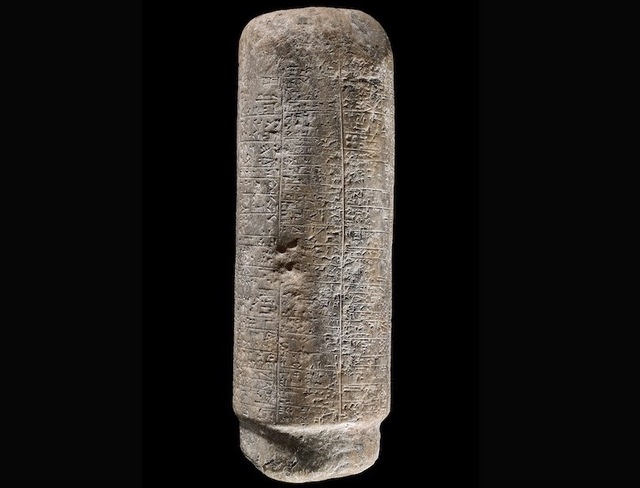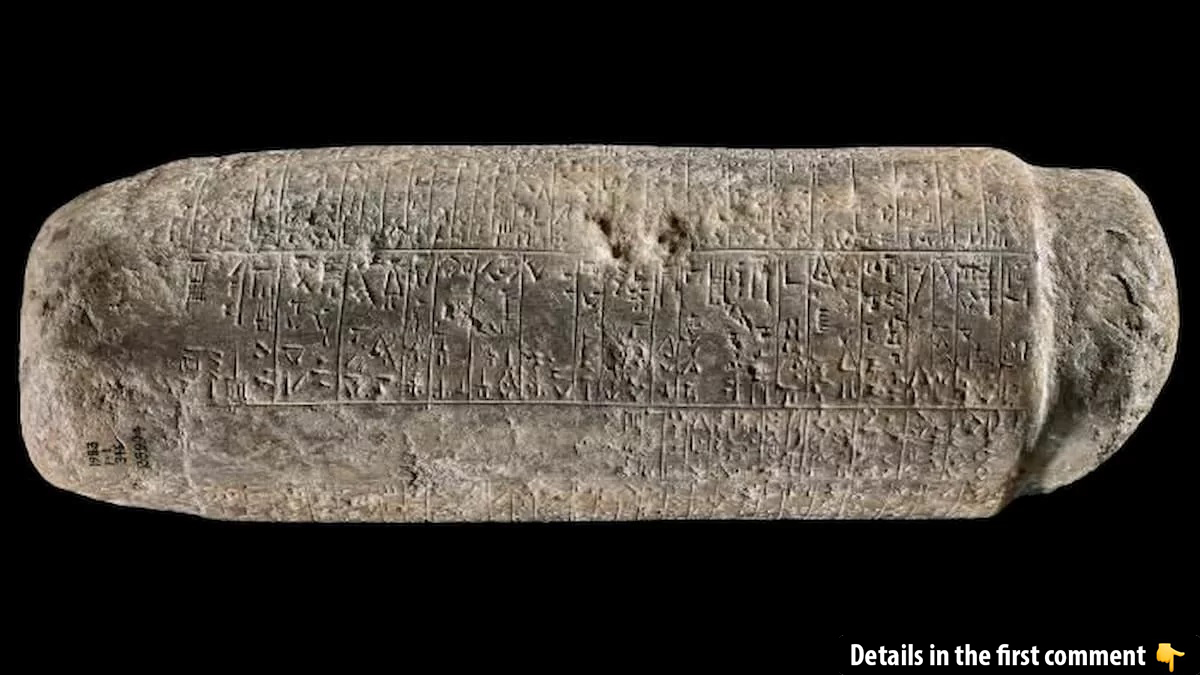Hidden within the sands of ancient Mesopotamia, a remarkable artifact has come to light, shedding new light on the history of human conflict. The 4,500-year-old pillar discovered between the cities of Umma and Lagash not only chronicles a territorial dispute but also marks the first written record of neighbors clashing over borders. This discovery offers a rare glimpse into the political and social dynamics of one of the world’s earliest civilizations.
The Pillar’s Historical Context
The pillar in question, unearthed in the heart of ancient Mesopotamia, provides invaluable insight into a time long past. Dating back to around 2500 BCE, it stands as a testament to the complexities of early city-states, each vying for control of land and resources. Located in a region historically known for its advanced civilizations, including the Sumerians, Akkadians, and Babylonians, the pillar belonged to a time when organized states and cities were beginning to carve out their identities in the fertile lands between the Tigris and Euphrates rivers.
Mesopotamia, often referred to as the “Cradle of Civilization,” was home to powerful city-states that frequently engaged in both cooperation and rivalry. The discovery of this pillar, with its intricate inscription, marks a pivotal moment in understanding how these early societies interacted with each other. It was within this environment of territorial expansion and competition that the first signs of organized diplomacy began to emerge, giving rise to the need for treaties and boundaries to maintain peace and order.
Video
Watch this video with Irving Finkel as he explores the Babylonian Map of the World, offering a fascinating look at ancient cartography in Curator’s Corner S9 Ep5.
Decoding the Inscription: The First Evidence of Border Disputes
The inscription carved into the pillar, deciphered by modern scholars, offers the first documented evidence of a border dispute in recorded history. These inscriptions provide a rare look into the tensions between city-states as they jockeyed for control over coveted lands. The content of the inscription suggests that the city-state involved was embroiled in territorial disputes with its neighbors, marking a significant step toward understanding the role of diplomacy in ancient governance.
In a way, this pillar serves as an early form of political messaging, providing a written record of grievances and territorial claims that were no longer passed down through oral traditions or symbolic representations. It reveals that even in the earliest days of human civilization, the concept of borders and the need for diplomacy were not just a matter of internal governance but were intrinsically linked to the relations between different people and territories. This was a clear sign of how political and territorial disputes were becoming increasingly formalized, setting the stage for the more sophisticated international relations that would develop in later periods.

The Role of Diplomacy and Neighborly Relations in Ancient Mesopotamia
The ancient world was not a place of isolated societies; instead, city-states were deeply interconnected through trade, warfare, and alliances. This interconnectedness made diplomacy essential in maintaining peace and stability. The pillar not only reflects a dispute but also highlights the early beginnings of diplomatic practice in the region.
In ancient Mesopotamia, alliances and rivalries played a significant role in shaping the political landscape. The inscription on the pillar serves as a reminder of the importance of negotiation, as leaders and rulers sought to avoid all-out war while simultaneously protecting their territorial interests.

Cities in Mesopotamia, such as Ur, Babylon, and Lagash, were often at odds with each other over land, trade routes, and water sources. However, these conflicts were often resolved through diplomatic measures like treaties or marriage alliances. The pillar provides evidence that even before the rise of formalized states and international diplomacy, early human societies were grappling with complex territorial issues. It demonstrates how border conflicts were not only an issue of military strength but also one of negotiation, political influence, and legal precedence.
Technological Breakthrough: Deciphering the Ancient Text
One of the most fascinating aspects of this discovery is the technological progress that allowed researchers to decode the pillar’s inscriptions. The development of advanced archaeological and linguistic techniques enabled experts to translate the ancient symbols and offer insights into the lives of those who lived thousands of years ago. Scholars used a combination of traditional methods, like direct analysis of the symbols, along with cutting-edge technologies, such as computer models and linguistic databases, to help interpret the pillar’s meaning.
This breakthrough is important not only for understanding this specific historical moment but also for illustrating how technology continues to reshape our understanding of ancient cultures. By deciphering these ancient texts, researchers are able to fill in the gaps of human history and provide clearer pictures of how ancient people approached governance, conflict, and diplomacy. The use of technology in archaeology brings us closer to the past, enabling scholars to reconstruct the complex relationships between ancient civilizations.
The Pillar’s Role in Shaping Ancient Political History
The significance of the pillar extends far beyond the immediate context of its inscriptions. By examining the content of the inscription and its place in the broader political landscape of Mesopotamia, researchers are gaining a deeper understanding of the political structures that existed in the region. The disputes described on the pillar reflect the growing importance of territorial sovereignty and governance in shaping the relationships between city-states.
The political dynamics at play in this period laid the foundation for later developments in governance and statecraft, influencing the rise of larger empires such as the Akkadian and Babylonian empires. This pillar provides a snapshot of the formative stages of international relations, demonstrating that ancient rulers were already thinking strategically about how to manage territorial claims and disputes, much like modern-day diplomats.

The Broader Implications: Archaeology’s Contribution to Understanding Conflict
The discovery of this pillar and its inscriptions has broader implications for the study of ancient conflict and diplomacy. By examining such artifacts, scholars can gain insights into the early history of warfare, negotiation, and territorial politics. This discovery adds to our understanding of how early human societies dealt with the same issues that continue to shape global politics today. Territorial disputes, border conflicts, and diplomacy are not just modern phenomena but have deep roots in our collective history.
The pillar’s story helps us understand that while the tools and technologies of diplomacy may have evolved over time, the core issues surrounding territorial sovereignty and conflict resolution remain remarkably similar. It is a reminder that humanity has been grappling with these challenges for millennia, and our understanding of how ancient societies navigated these issues can provide valuable lessons for contemporary diplomacy.
Video
Tune into this video to discover Karakum, the ancient civilization of oases, and learn about its unique culture and history.
Conclusion: A Glimpse into the Past
The discovery of the 4,500-year-old Mesopotamian pillar offers a remarkable glimpse into the ancient world and highlights the long-standing importance of territorial disputes and diplomacy. As one of the earliest examples of written evidence regarding border conflicts, this pillar enriches our understanding of the political and social dynamics of ancient Mesopotamian city-states. By uncovering the intricacies of early diplomacy, this discovery bridges the gap between ancient and modern political practices, providing a timeless reminder of the importance of negotiation, diplomacy, and peaceful conflict resolution in shaping the course of history.



